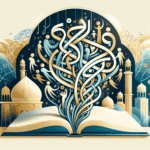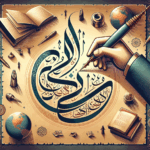The Role of the Arabic Alphabet in Religious Texts
Welcome to our exploration of the fascinating role the Arabic alphabet plays in religious texts. Whether you’re a language enthusiast, a religious scholar, or simply curious, this post will delve into the historical and spiritual significance of this ancient script. 📜✨
Table of Contents
1. Introduction
2. The Historical Journey of the Arabic Alphabet
3. The Arabic Alphabet in Islamic Texts 📖
4. Beyond Islam: Other Religious Uses 🌍
5. Conclusion
6. FAQs
Introduction
The Arabic alphabet is more than just a system of writing; it is a vessel of cultural and spiritual heritage. Its reach extends beyond the Arabian Peninsula, influencing various religious texts. Let’s embark on a journey to understand its profound impact!
The Historical Journey of the Arabic Alphabet
The Arabic alphabet has a rich history that dates back to the 4th century CE. Originating from the Nabataean script, it evolved over centuries into the form we recognize today. This evolution was not just linguistic but deeply intertwined with the spread of religion and culture. From the sacred deserts of Arabia to the bustling markets of Baghdad, the Arabic script has been a constant companion to scholars and believers alike.
The Arabic Alphabet in Islamic Texts 📖
The Quran, the holy book of Islam, is perhaps the most significant text written in Arabic. The language and its script are considered divine, with each letter and sound holding spiritual significance. The Arabic alphabet is not just a medium for communication but a sacred tool that connects believers to their faith.
Arabic calligraphy, an art form in its own right, has been used to adorn mosques and religious texts, highlighting the beauty and reverence of the words. This artistic expression is a testament to the script’s spiritual importance.
Beyond Islam: Other Religious Uses 🌍
While the Arabic alphabet is predominantly associated with Islam, its usage extends to other religions as well. Many Christian texts in the Arab world are written in Arabic, utilizing the script for translations of the Bible and other religious teachings. This cross-religious usage highlights the script’s versatility and significance.
In addition, various cultural and religious communities, such as the Jews of the Middle East, have historically used the Arabic script for their texts, showcasing its widespread acceptance and adaptability.
Conclusion
The Arabic alphabet is a cornerstone of religious and cultural identity for millions around the world. Its role in religious texts is not just about the words themselves but the deep spiritual connection they foster. Whether through the eloquent verses of the Quran or the translated hymns in Christian liturgies, the Arabic script continues to be a symbol of faith and tradition.
FAQs
1. Why is the Arabic alphabet significant in religious texts?
The Arabic alphabet holds spiritual importance, especially in Islam, as it is the script of the Quran. Its use in religious texts signifies a deep connection to faith and tradition.
2. How did the Arabic script evolve over time?
The Arabic script evolved from the Nabataean script in the 4th century CE, adapting over time to meet the linguistic and cultural needs of the Arab world.
3. Is the Arabic alphabet used in non-Islamic religious texts?
Yes, the Arabic alphabet is used in various non-Islamic religious texts, including Christian and Jewish texts in the Middle East, highlighting its adaptability and widespread use.
4. What is Arabic calligraphy and its significance?
Arabic calligraphy is the artistic practice of handwriting and calligraphy based on the Arabic alphabet. It is significant for its aesthetic beauty and spiritual resonance, often used in religious art and architecture.
5. Can learning the Arabic script enhance religious understanding?
Absolutely! Learning the Arabic script can deepen one’s understanding of religious texts, providing insights into the linguistic nuances and spiritual messages conveyed through the original script.
We hope this journey into the role of the Arabic alphabet in religious texts has been enlightening. Feel free to share your thoughts and insights in the comments below! 🌟






